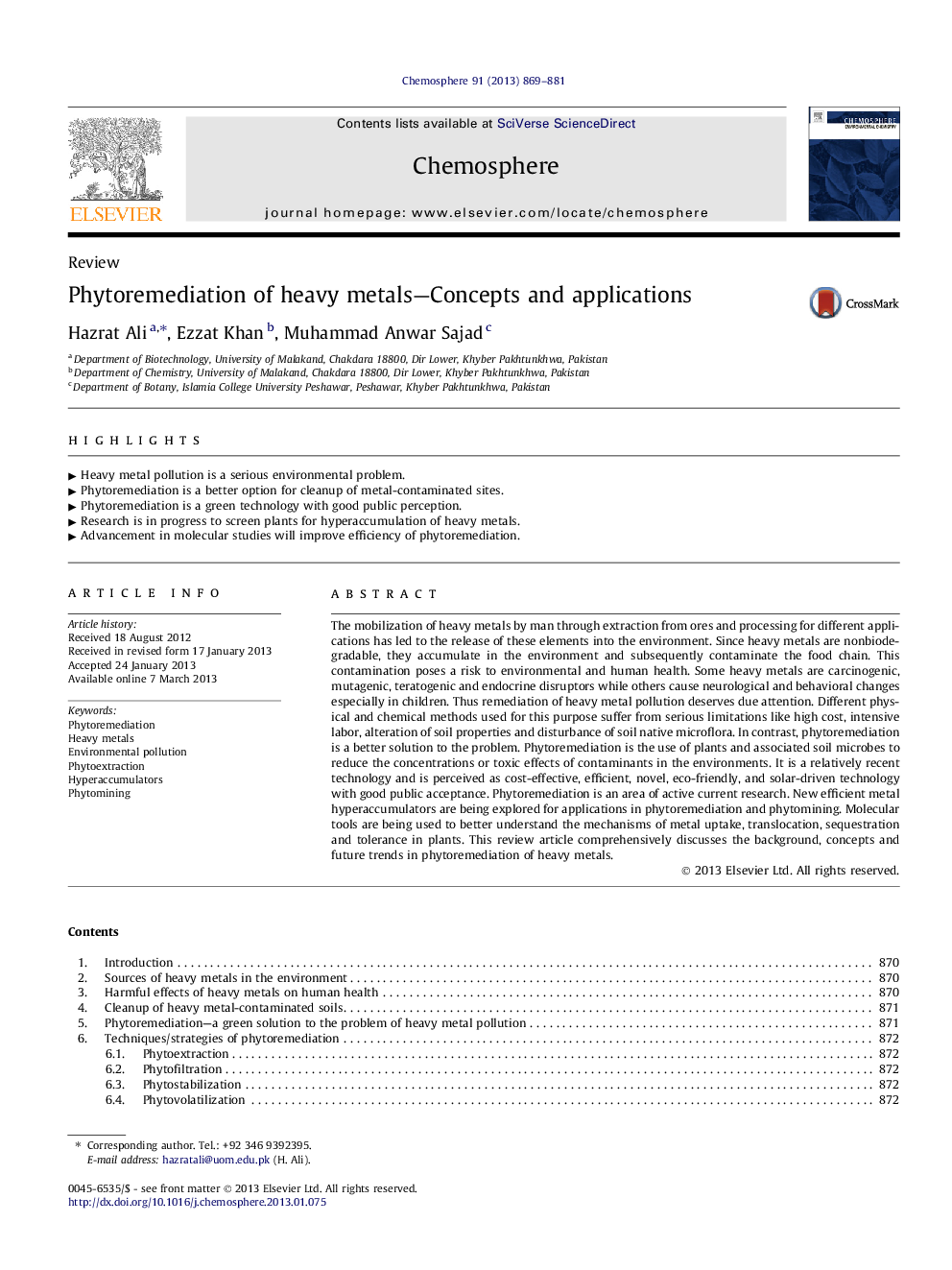| Article ID | Journal | Published Year | Pages | File Type |
|---|---|---|---|---|
| 4409340 | Chemosphere | 2013 | 13 Pages |
The mobilization of heavy metals by man through extraction from ores and processing for different applications has led to the release of these elements into the environment. Since heavy metals are nonbiodegradable, they accumulate in the environment and subsequently contaminate the food chain. This contamination poses a risk to environmental and human health. Some heavy metals are carcinogenic, mutagenic, teratogenic and endocrine disruptors while others cause neurological and behavioral changes especially in children. Thus remediation of heavy metal pollution deserves due attention. Different physical and chemical methods used for this purpose suffer from serious limitations like high cost, intensive labor, alteration of soil properties and disturbance of soil native microflora. In contrast, phytoremediation is a better solution to the problem. Phytoremediation is the use of plants and associated soil microbes to reduce the concentrations or toxic effects of contaminants in the environments. It is a relatively recent technology and is perceived as cost-effective, efficient, novel, eco-friendly, and solar-driven technology with good public acceptance. Phytoremediation is an area of active current research. New efficient metal hyperaccumulators are being explored for applications in phytoremediation and phytomining. Molecular tools are being used to better understand the mechanisms of metal uptake, translocation, sequestration and tolerance in plants. This review article comprehensively discusses the background, concepts and future trends in phytoremediation of heavy metals.
► Heavy metal pollution is a serious environmental problem. ► Phytoremediation is a better option for cleanup of metal-contaminated sites. ► Phytoremediation is a green technology with good public perception. ► Research is in progress to screen plants for hyperaccumulation of heavy metals. ► Advancement in molecular studies will improve efficiency of phytoremediation.
